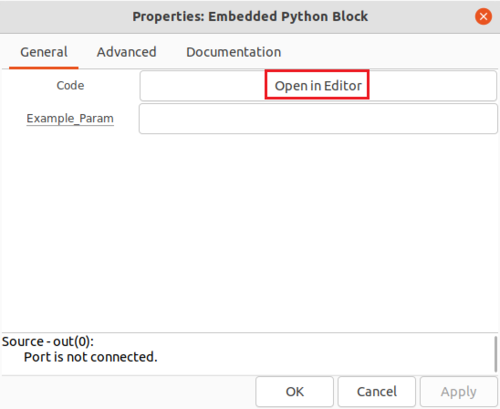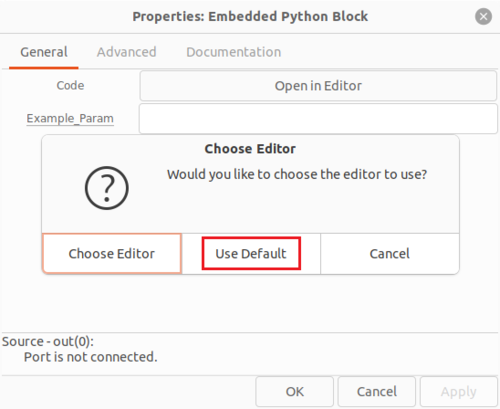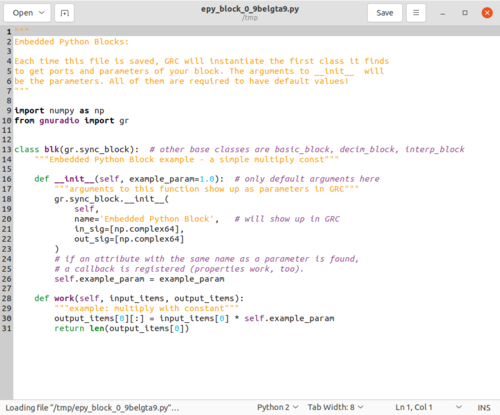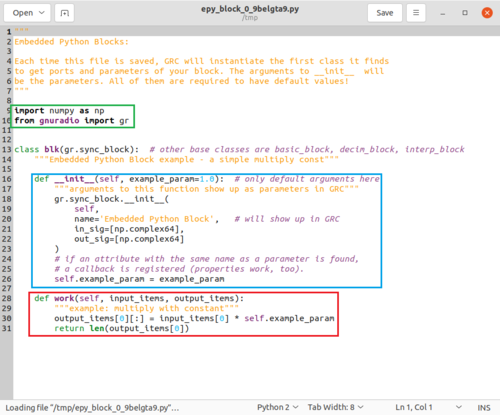Creating Your First Block: Difference between revisions
Jump to navigation
Jump to search
Mattcarrick (talk | contribs) No edit summary |
Mattcarrick (talk | contribs) No edit summary |
||
| Line 32: | Line 32: | ||
# ''import'' statements in <span style="color:green">green</span> | # ''import'' statements in <span style="color:green">green</span> | ||
# ''__init__'' function in <span style="color:orange">orange</span> | # ''__init__'' function in <span style="color:orange">orange</span> | ||
# '' | # ''work'' function in <span style="color:red">red</span> | ||
[[File:PythonBlockCodeFunctions.png|500px]] | [[File:PythonBlockCodeFunctions.png|500px]] | ||
Revision as of 15:41, 7 January 2022
This tutorial will guide you through creating your first block with the Embedded Python Block.
Embedded Python Block
The Embedded Python Block is a tool to quickly prototype a block within a flowgraph. Search for the Python Block and add it to the workspace:
Double-click the box to edit the properties. The Embedded Python Block has two properties,
- Code, a click-box which contains a link to the Python code for the block and
- Example_Param, an input parameter to the block.
Click on Open in Editor to edit the Python code:
You will be prompted with another choice for which editor to use to write the Python code. Click Use Default:
An editor window will then display the Python code for the Embedded Python Block:
Editing Python Block Code
There are three important sections in the Python block code:
- import statements in green
- __init__ function in orange
- work function in red




